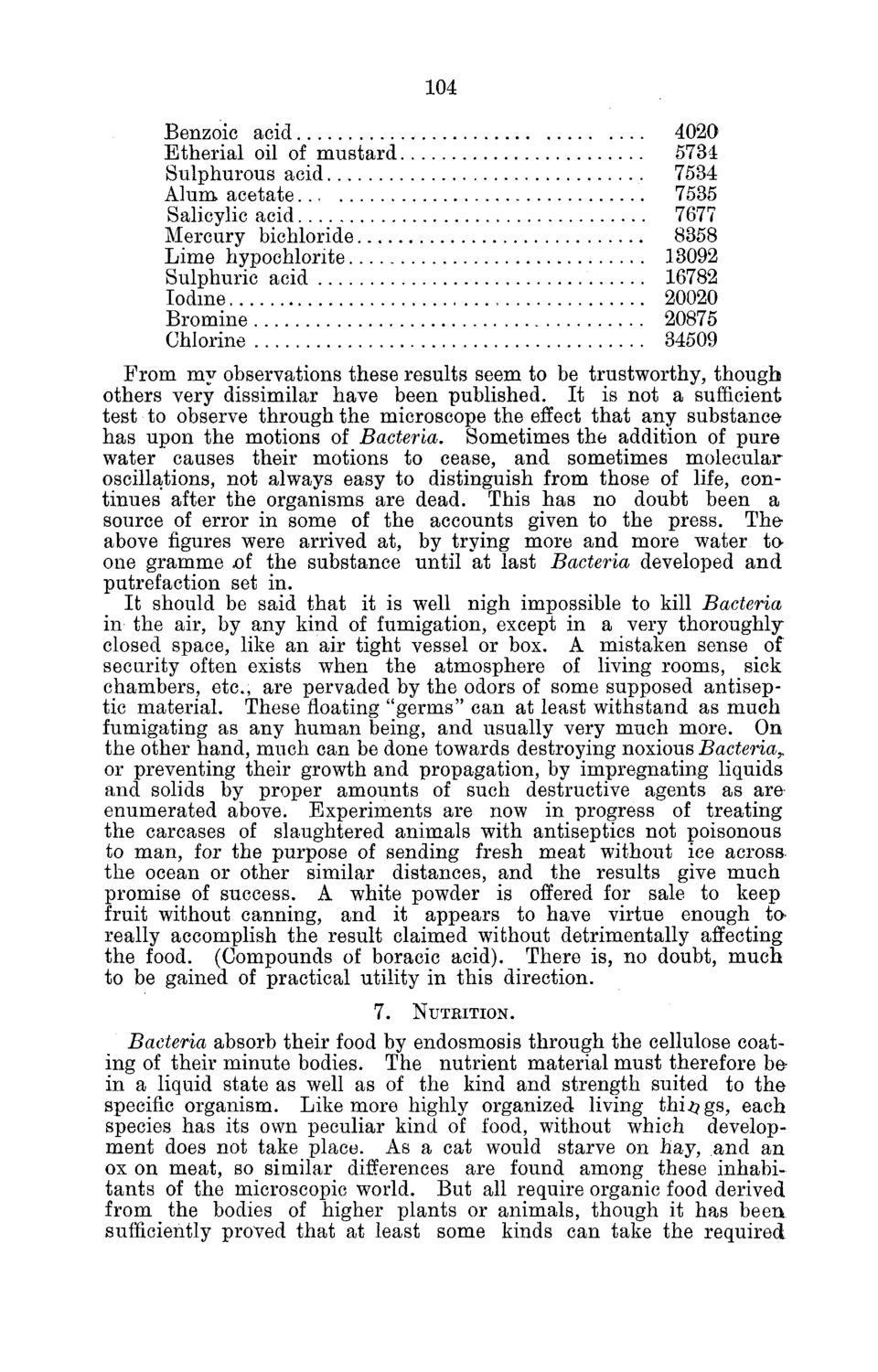| |
| |
Caption: Board of Trustees Minutes - 1882
This is a reduced-resolution page image for fast online browsing.

EXTRACTED TEXT FROM PAGE:
104 Benzoic acid Etherial oil of mustard Sulphurous acid Alum acetate Salicylic acid Mercury bichloride Lime hypochlorite Sulphuric acid Iodine Bromine Chlorine 4020 5734 7534 7535 7677 8358 13092 16782 20020 20875 34509 From my observations these results seem to be trustworthy, though others very dissimilar have been published. It is not a sufficient test to observe through the microscope the effect that any substance has upon the motions of Bacteria. Sometimes the addition of pure water causes their motions to cease, and sometimes molecular oscillations, not always easy to distinguish from those of life, continues after the organisms are dead. This has no doubt been a source of error in some of the accounts given to the press. The above figures were arrived at, by trying more and more water ta one gramme jof the substance until at last Bacteria developed and putrefaction set in. It should be said that it is well nigh impossible to kill Bacteria in the air, by any kind of fumigation, except in a very thoroughlyclosed space, like an air tight vessel or box. A mistaken sense of security often exists when the atmosphere of living rooms, sick chambers, etc., are pervaded by the odors of some supposed antiseptic material. These floating "germs" can at least withstand as much fumigating as any human being, and usually very much more. On the other hand, much can be done towards destroying noxious Bacteria? or preventing their growth and propagation, by impregnating liquids and solids by proper amounts of such destructive agents as are enumerated above. Experiments are now in progress of treating the carcases of slaughtered animals with antiseptics not poisonous to man, for the purpose of sending fresh meat without ice across, the ocean or other similar distances, and the results give much promise of success. A white powder is offered for sale to keep fruit without canning, and it appears to have virtue enough t a really accomplish the result claimed without detrimentally affecting the food. (Compounds of boracic acid). There is, no doubt, much to be gained of practical utility in this direction. 7. NUTRITION. Bacteria absorb their food by endosmosis through the cellulose coating of their minute bodies. The nutrient material must therefore be in a liquid state as well as of the kind and strength suited to the specific organism. Like more highly organized living things, each species has its own peculiar kind of food, without which development does not take place. As a cat would starve on hay, and an ox on meat, so similar differences are found among these inhabitants of the microscopic world. But all require organic food derived from the bodies of higher plants or animals, though it has been sufficiently proved that at least some kinds can take the required
| |